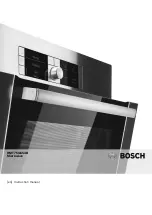
©
Home Training Tools Ltd. 2005
Page 6 of 7
Visit us at www.homesciencetools.com
Ideas for Using Your
Microscope
Your stereo microscope is a versatile
instrument than can be used to view a variety of
specimens. This section contains various
suggestions for what to study.
Clear plastic or glass petri dishes are great
for viewing live or messy objects with a stereo
microscope because they fit well on the stage
and keep everything adequately contained. The
suggestions below are just a few things you can
view with petri dishes. Place the item or items to
be viewed in the bottom of a petri dish and
position it on the stage plate of your microscope.
Use top or bottom lighting.
Observe the habits of live insects.
Collect insects in the bottom of a petri dish
and cover with its lid to keep insects from
escaping. Be careful not to leave the light source
shining on the insects for too long as the heat
could eventually kill them.
Study a shallow dish of pond water, daphnia,
or brine shrimp.
Watch them closely as these tiny creatures
swim, dive, and eat.
Examine a soil sample to see the different
materials that comprise it.
Soils with a lot of sand or clay are
particularly interesting to look at. You might even
want to collect soil samples from several
different spots and compare and contrast what
you see in each sample.
Dissect a flower to learn about the beauty
and intricacies of all its parts.
Carefully pull the flower petals and inside
parts off of the stem, trying not to damage or
tear them. See if you can identify the parts using
a flower identification book. Stick one or two of
the parts on your microscope to get a closer
look. If there was a lot of pollen on the flower, try
putting the pollinated parts, or loose pollen, into
a petri dish and check it out with your
microscope.
(Note: This is not a good
experiment to do if you have bad allergies!)
Compare the types of minerals and crystals
in different rock specimens.
You can break off small pieces of larger
rocks by knocking them together or using a rock
pick. Put any small shards or pieces of the
broken rocks into a petri dish for easy viewing.
Make a simple prepared slide.
To make a slide, tear a 2½-3” long piece of
Scotch tape and set it sticky side up on the
kitchen table or other work area. Fold over about
½” of the tape on each end to form finger holds
on the sides of the slide. Next, sprinkle a few
grains of salt, sugar, ground coffee, or sand in
the middle of the sticky part of the slide.
Carefully observe the differences between
different grains.
Hair and thread also
work well on
homemade tape
slides. Collect samples of hair from family
members or pets and stick one hair from each
sample on a tape slide. Label each slide and
view them one at a time with your microscope.
Write down your observations about each to see
how hairs from humans and animals differ. You
can also look at threads or fibers from furniture,
rugs or clothing from around your house.
Record your observations.
In the field of science, recording
observations while performing an experiment is
one of the most useful tools available. Early
scientists often kept very detailed journals of the
experiments they performed, making entries for
each individual experiment and writing down
virtually everything they saw. These entries
often included drawings and detailed
descriptions as well as the procedures they
used, data they collected, and conclusions
drawn from their experimentation.
Our Microscope Observation worksheet
(on the next page) will help you to keep track of
the things that you study with your microscope
and remember what you have learned. Blanks
are provided for recording general information
about each specimen, such as its type and the
date it was collected. In addition, there is space
to write down your observations and make
sketches of what you see. Reproduce this sheet
as necessary.

























